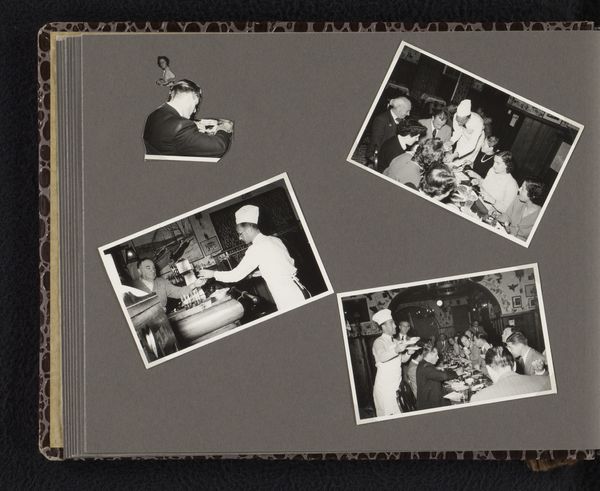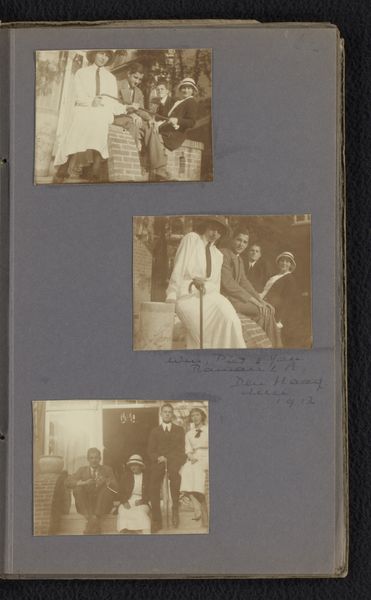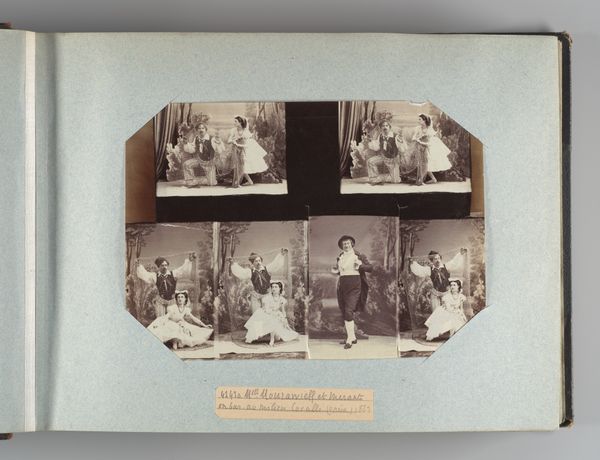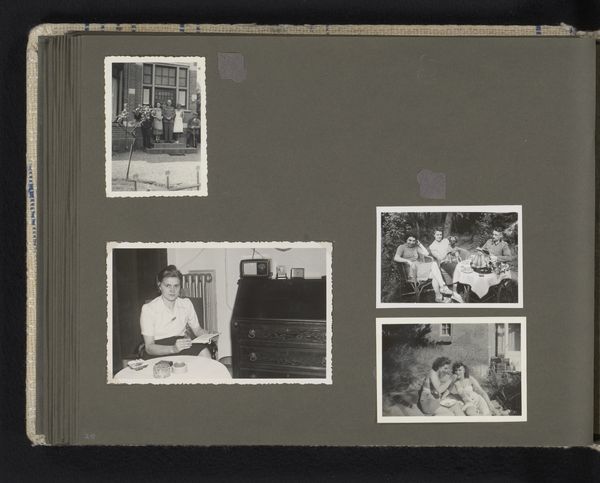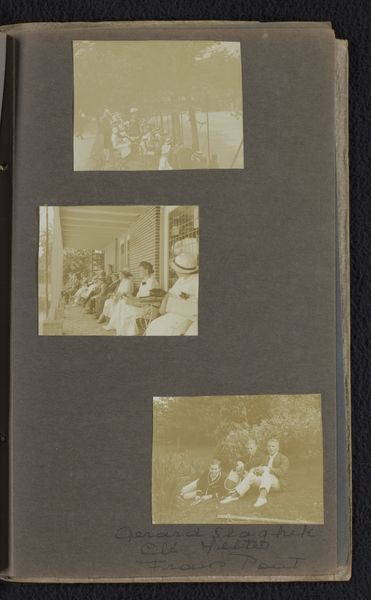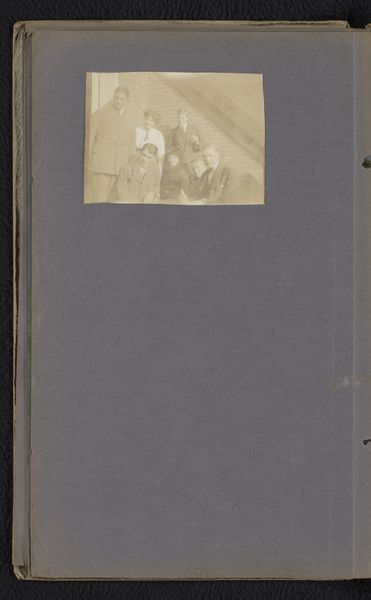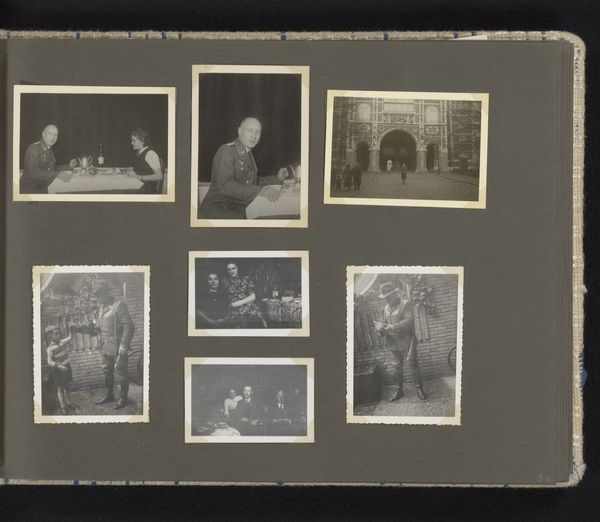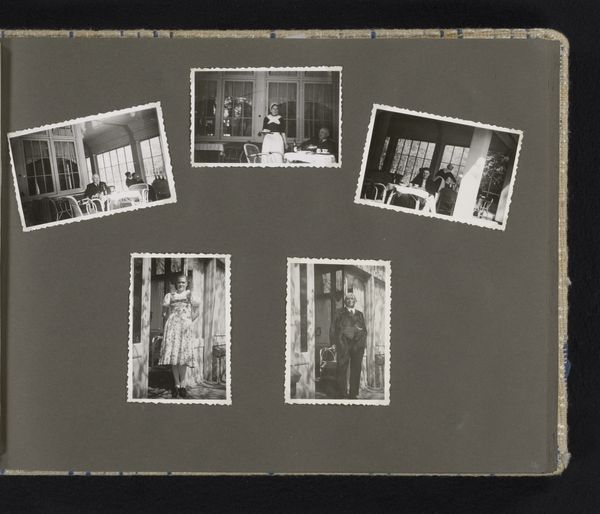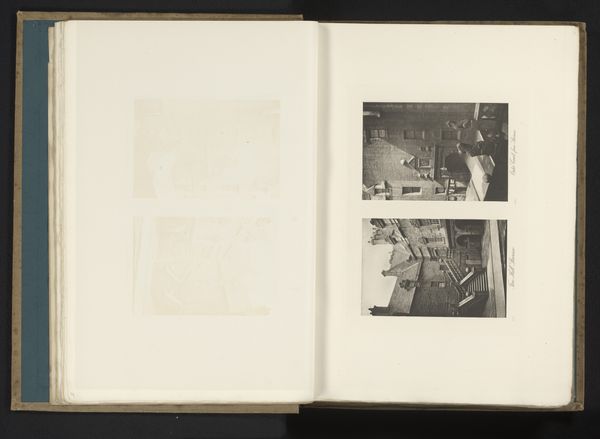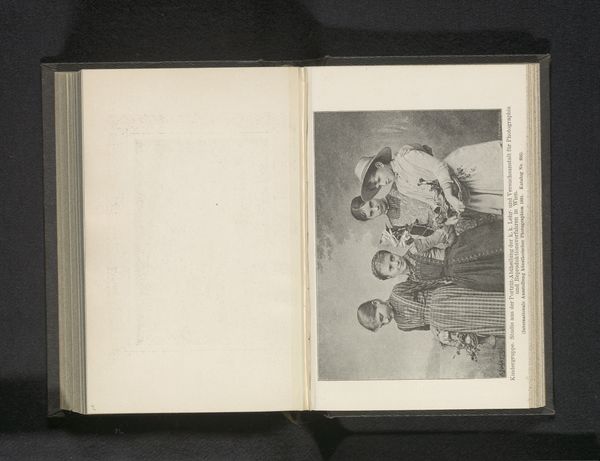
Isabel Wachenheimer's derde echtgenoot Gideon Elon tijdens een etentje met onbekende collega's van Isabel tijdens haar periode bij KLM, 1955, Israël, en een knipsel Possibly 1955
0:00
0:00
collage, print, photography, gelatin-silver-print, albumen-print
#
portrait
#
historical design
#
collage
# print
#
caricature
#
photography
#
comic
#
gelatin-silver-print
#
genre-painting
#
modernism
#
albumen-print
Dimensions: height 60 mm, width 90 mm, height 190 mm, width 250 mm
Copyright: Rijks Museum: Open Domain
Editor: This is an interesting collage of gelatin silver and albumen prints titled "Isabel Wachenheimer's derde echtgenoot Gideon Elon tijdens een etentje met onbekende collega's van Isabel tijdens haar periode bij KLM, 1955, Israël, en een knipsel," possibly from 1955. I'm struck by the stark contrast between the informal snapshots and the somewhat...problematic caricature. What stands out to you as you examine this work? Curator: Immediately, the tripartite division of the composition commands attention. Note the interplay between the representational photographs and the abstracted cartoon. How does the visual language of each component contribute to the overall structure? Is there a dominant element, or does the collage strive for a dynamic equilibrium? Editor: I see your point. The black and white photos, very documentary in style, flank the central cartoon image which seems… well, dated, both in its style and possibly its subject matter. It seems a discordant element, creating a very unstable relationship with the photographs. Is that intentional? Curator: Intention is less relevant than effect. Consider how the varied textures – the glossy prints versus the matte paper of the cartoon – activate the surface. Observe how your eye travels within and between the quadrants established by the images, as though seeking to solve its formal structure. Note how this disrupts expectations about photographic portraiture. Is it truly "portraiture" when mediated through such complex layering of different modes? Editor: So you’re suggesting that the meaning isn’t as important as how these disparate elements visually interact, the lines, shapes and tonal values and what they generate. The work is about the artistic components more than who the sitters are or their personal history? Curator: Precisely. It's not about denotation, it's about how it *means*. To fully know it, strip it back to form alone and examine its structures, which will provide greater clarity and understanding. Editor: That makes sense! Focusing on the visual relationships really opened my eyes to a completely different way of seeing the piece, beyond my initial reaction to its imagery. Curator: And I am struck by how our dialogue has confirmed the enduring power of this compositional strategy in challenging conventional modes of art appreciation.
Comments
No comments
Be the first to comment and join the conversation on the ultimate creative platform.
